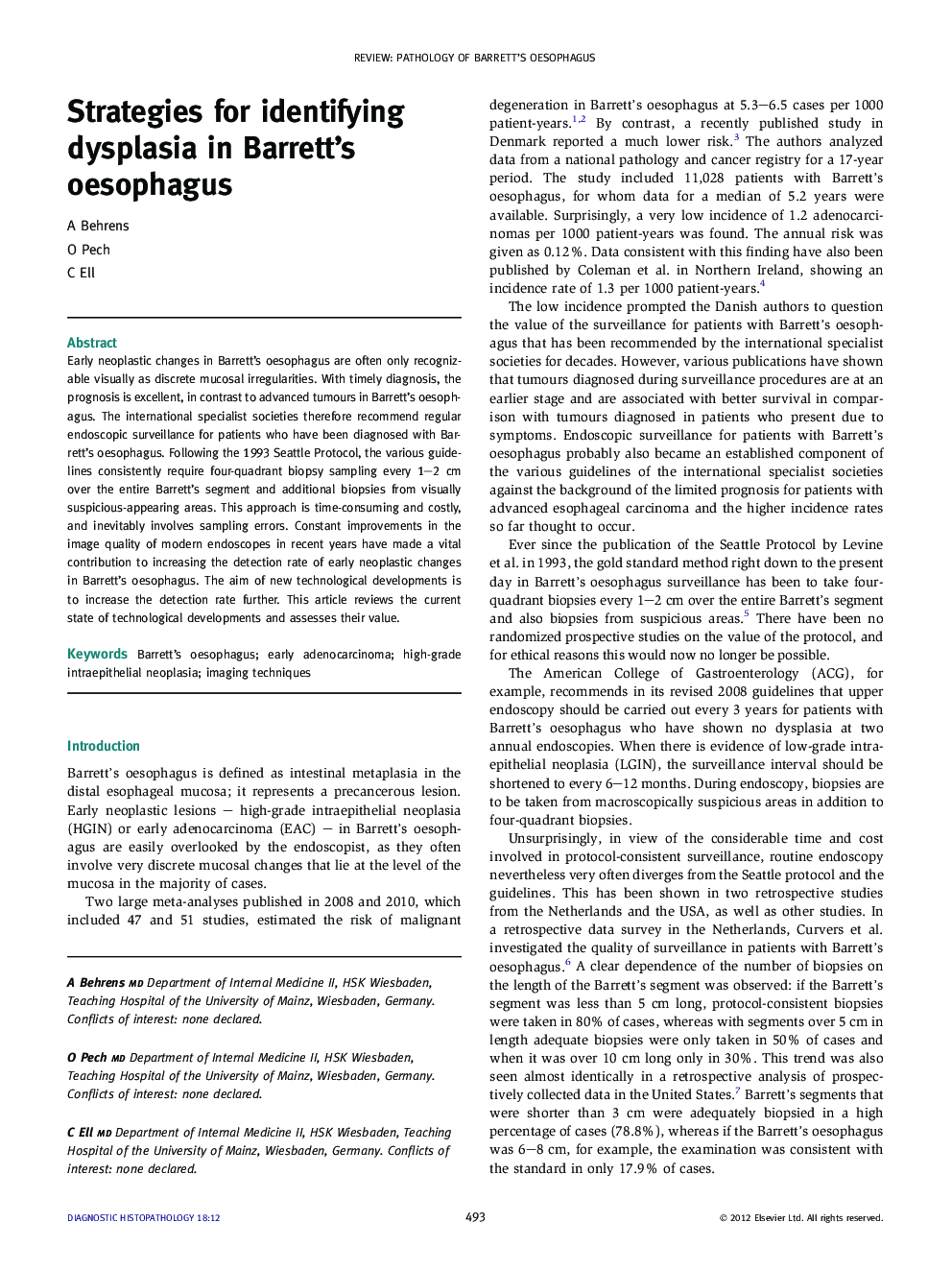| Article ID | Journal | Published Year | Pages | File Type |
|---|---|---|---|---|
| 4131193 | Diagnostic Histopathology | 2012 | 5 Pages |
Early neoplastic changes in Barrett's oesophagus are often only recognizable visually as discrete mucosal irregularities. With timely diagnosis, the prognosis is excellent, in contrast to advanced tumours in Barrett's oesophagus. The international specialist societies therefore recommend regular endoscopic surveillance for patients who have been diagnosed with Barrett's oesophagus. Following the 1993 Seattle Protocol, the various guidelines consistently require four-quadrant biopsy sampling every 1–2 cm over the entire Barrett's segment and additional biopsies from visually suspicious-appearing areas. This approach is time-consuming and costly, and inevitably involves sampling errors. Constant improvements in the image quality of modern endoscopes in recent years have made a vital contribution to increasing the detection rate of early neoplastic changes in Barrett's oesophagus. The aim of new technological developments is to increase the detection rate further. This article reviews the current state of technological developments and assesses their value.
